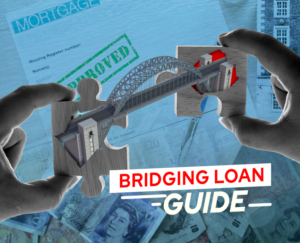Bridging Loan Guide:A bridging loan (bridge loan) allows you to get a quick short-term loan against existing property. It is similar to a mortgage with a minor difference. Compared to a mortgage, the term of a bridging loan is shorter. Therefore, it is the best option when you are looking to get some money and repay in a short time frame (6>12 months). Furthermore with minimal referencing compared to a mortgage. For homeowners, a bridging loan is a go-to alternative. It can help you in the transition period of buying a new home without selling the old one.
This bridging loan guide briefly will unravel some of the workings of a bridging loan. Don’t worry, we won’t use complicated financial wording. The definition of a Bridging Loan (simplified): When looking into bridging loans, you’ll come across two common types of loans:
Bridging Loan Guide – Open Bridging Loans
Open bridging finance is for people who don’t have a clear exit strategy. However, since the loan has to be paid back open bridging loans are higher risk. This is reflected in the monthly interest rate. Therefore it is far better for the borrower and lender alike to be comfortable with an exit strategy. A simple example is when you plan to repay the lender by selling a property. However if you don’t have a buyer or a completion date this represents higher risk open bridging. Alternatively exchange and completion dates confirms that bases are covered and that the loan can be redeemed.  Since open bridging loans are riskier, their interest rates are generally higher.
Since open bridging loans are riskier, their interest rates are generally higher.
In an open bridging loan there is no fixed repayment date. However the loan would be expected to be repaid within 12 months (based on the agreement). If the borrower is unable to repay the lender within this period, they will be charged a penalty. The bridging loan lender needs to be comfortable that the loan will be paid back (exit strategy). If the bridging loan runs on for an extended period of time penalty fees will begin to loom. Of course, on the other hand all being well some lenders will allow you to exit the loan early. An early exit without penalty and a saving on interest charges.
Bridging Loan Guide – Closed Bridging Loans
This repayment date for closed bridging loans is fixed. It is a viable option for borrowers who have exchanged contracts and are waiting for their payment to go through. To explain further, consider the example of a business moving its premises. They have a fixed date for their purchase and a completion date for the sale of their previous property. In this case, a closed bridging loan is the ideal option. As soon as they sell the existing premise, they can then pay off the loan. Closed bridging loans are ideal in scenarios where the owner is looking for property development.
A closed bridging loan allows them to finance each stage of the development. Because there’s lower risk involved and the property owner has a clear vision, the interest rate is less. Whichever type of bridging loan you opt for, make sure to repay on time. Ensure you have a clear and pre-determined exit strategy to a mortgage whether that be a standard residential mortgage, a buy to let mortgage or an HMO mortgage. We live in an uncertain world and a clear exit strategy can be invaluable for peace of mind.
Bridging loan Guide – Why Bridge?
Bridging loans are a great way to get a short-term loan quickly. If you’re in the middle of development and need to raise funds immediately, a bridging loan will ease the passage. Increasing development costs and budget overspend are a constant spectre in property development. Bridging loans have many uses in relation to property as follows.
Renovation work
A bridging loan covers the cost of renovation until a remortgage/mortgage is available. The potential increased value of your home determines the loan amount.
Uninhabitable Property
A bridging Loan will cover the cost to purchase, the exit strategy when the work is completed and a mortgage secured on the property.
Auction Property
Mainstream mortgages typically take up to 6>8 weeks to complete, Auction purchases typically need to be fulfilled within 28 days.
Development Land
Bridging Finance will cover the purchase and build. The exit will be the mortgage secured on the property once the development is completed and/or sale of completed units.
Quick Payments – Release of Funds
Unlike other loans, you won’t have to wait for weeks or months to secure a bridging loan. You can arrange a bridging loan within a few days. This is great in emergencies and can save major headaches.
Smooth and Quick Process
Typically, lenders perform a thorough background check for most types of loans. However for a bridging loan, the lender is primarily focused on an exit strategy. Typically this will be the first question. No lengthy checks are involved and the lender needs to be comfortable with the asset.
Affordability
Bridging Loan interest rates are high, as an option the interest is rolled up and cleared on redemption. Therefore no monthly payments need to be met.
Freedom
Bridging loan criteria is less stringent than mainstream mortgage lending criteria.
